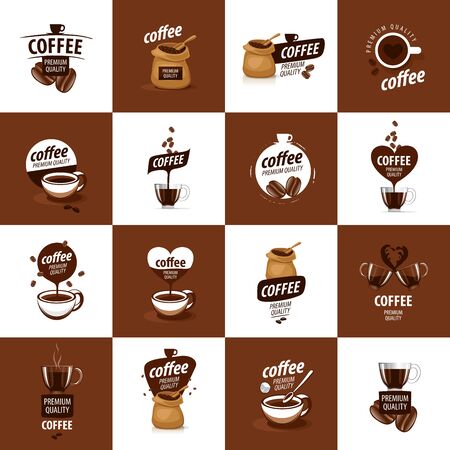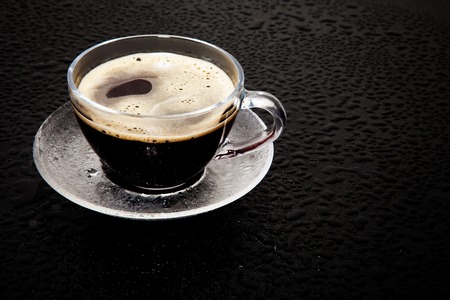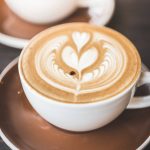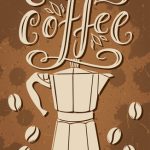1. Understanding the Pour Over Method
Pour over coffee is more than just a brewing method—its a ritual that highlights the art of making coffee by hand. This technique involves pouring hot water over freshly ground coffee in a slow, controlled manner to extract flavor evenly. Its appreciated for its simplicity, precision, and ability to bring out nuanced flavors in high-quality beans.
Origins of Pour Over Coffee
The pour over method has roots in early 20th century Germany, where Melitta Bentz invented the first paper coffee filter in 1908. Fast forward to today, and this method has become a staple in third wave coffee culture across the United States. Its popularity continues to grow among baristas and home brewers alike who value craftsmanship and control.
Why Americans Love Pour Over
In the U.S., pour over brewing has gained serious traction thanks to its clean, vibrant taste and the experience it offers. Unlike automatic drip machines, pour over puts you in charge of every step—from water temperature to pouring speed—which allows for a deeper connection with your cup of coffee.
Main Reasons Why Pour Over Is Popular in the U.S.
| Reason | Description |
|---|---|
| Flavor Clarity | Highlights delicate notes and origins of specialty beans. |
| Control | Gives users full control over brewing time, temperature, and flow rate. |
| Coffee Ritual | Adds a mindful, hands-on element to morning routines. |
| Aesthetic Appeal | Sleek gear and minimalist design resonate with modern coffee culture. |
The Unique Characteristics of Pour Over Brewing
What sets pour over apart from other methods is its ability to produce a bright, clean cup with layered complexity. The use of paper filters helps remove oils and fine particles, resulting in a lighter body compared to French press or espresso. For many specialty coffee fans in the U.S., its the preferred way to enjoy single-origin beans because it preserves their unique taste profiles without masking them.
Quick Comparison: Pour Over vs Other Brew Methods
| Brew Method | Body | Flavor Profile | Ease of Use |
|---|---|---|---|
| Pour Over | Light to Medium | Clean, Bright, Complex | Moderate – Requires Technique |
| French Press | Full-bodied | Rich, Bold, Earthy | Easy – Minimal Gear Needed |
| Drip Machine | Medium-bodied | Mild, Consistent Flavor | Very Easy – Set & Forget |
| Espresso | Full-bodied & Concentrated | Intense, Robust, Syrupy | Difficult – Needs Skill & Equipment |
No matter where you are on your coffee journey, understanding what makes pour over special can help you appreciate not just how your coffee tastes—but also how its made. Whether youre using a Chemex or a Hario V60, pour over invites you to slow down and enjoy each step of the brew process.
2. Essential Tools for the Perfect Pour Over
When it comes to pour over coffee, having the right gear can make all the difference. Each tool plays a unique role in helping you brew a clean, flavorful cup that brings out the best of your beans. Let’s break down the essentials you’ll need to get started.
Drippers: Finding Your Style
The dripper is where your coffee grounds meet hot water, so choosing the right one matters. Two of the most popular and trusted options are:
| Dripper | Description | Best For |
|---|---|---|
| Hario V60 | A cone-shaped dripper with spiral ridges inside. Offers great control over flow rate and extraction. | Those who enjoy experimenting with grind size and pouring techniques. |
| Chemex | An elegant glass brewer that uses thick filters for a clean, crisp cup. | Coffee lovers who prefer a smoother, less oily brew with fewer fines. |
Gooseneck Kettles: Control Your Pour
If you want precision when pouring hot water over your grounds, a gooseneck kettle is a must. The narrow spout lets you control both the speed and direction of your pour—essential for even extraction.
Filters: Don’t Overlook Them
Filters might seem like an afterthought, but they significantly affect taste and clarity. Make sure to use the right type for your dripper—Chemex filters are thicker than Hario V60 filters and remove more oils and fines from your coffee.
Coffee Scales: Measure Like a Pro
Using a digital scale helps ensure consistency in your brewing. Measuring both your coffee grounds and water by weight (not volume) allows you to dial in the perfect ratio every time. A scale with a built-in timer is especially helpful during blooming and pouring phases.
Burr Grinders: Freshness Matters
Grind size has a big impact on flavor. Using a burr grinder (rather than a blade grinder) ensures uniform particle size, which leads to more even extraction. Aim for a medium-fine grind for most pour over methods, but don’t be afraid to tweak it based on taste.
Quick Gear Checklist
- ✅ Dripper (Hario V60 or Chemex)
- ✅ Gooseneck kettle
- ✅ Proper filters
- ✅ Digital coffee scale (with timer if possible)
- ✅ Burr grinder
- ✅ Freshly roasted whole bean coffee
With these tools in hand, youre well on your way to mastering the pour over technique and enjoying café-quality brews at home.

3. Choosing the Right Coffee and Grind Size
When it comes to pour over brewing, your coffee beans and grind size play a huge role in how your final cup tastes. Picking the right beans and grinding them properly can make all the difference between a flat, bitter brew and a clean, flavorful one. Lets break down how to choose the best beans and what grind size works best for pour over.
Choosing Your Coffee Beans
Not all coffee beans are created equal, especially when it comes to pour over. Since this method highlights flavor clarity, its ideal to go with high-quality, single-origin beans. These coffees often have unique tasting notes that really shine through with pour over techniques.
What to Look for:
| Coffee Type | Why It Works for Pour Over |
|---|---|
| Single-Origin | Offers unique flavor profiles and more clarity in taste. |
| Light to Medium Roast | Preserves complex flavors better suited for pour over. |
| Freshly Roasted (within 2-4 weeks) | Maintains aromatic oils and optimal freshness for brewing. |
Selecting the Right Grind Size
The grind size is just as important as the beans themselves. For pour over, you want a grind thats somewhere between fine and coarse — think sea salt texture. Too fine, and youll end up with over-extracted, bitter coffee. Too coarse, and your brew will be weak and under-extracted.
Grind Size Guide:
| Brew Method | Recommended Grind Size | Description |
|---|---|---|
| Pour Over (e.g., Hario V60, Chemex) | Medium-Fine | Feels like table salt; allows balanced extraction. |
| Drip Machine | Medium | Slightly coarser than pour over; good for auto brewers. |
| French Press | Coarse | Chunky grind; prevents sediment in immersion brewing. |
Pro Tips:
- Burr grinders work best: They give you consistent grind size compared to blade grinders.
- Taste test often: Slight changes in grind size can affect flavor — experiment to find your sweet spot.
- Grind just before brewing: This keeps the flavors fresh and aromatic oils intact.
Selecting the right coffee and dialing in your grind size is key to mastering your pour over game. With a bit of trial and error, youll find the perfect combo that brings out the best in every bean you brew.
4. Mastering the Pour: Technique and Timing
The pour over method may look simple, but perfecting it is all about mastering the technique and timing. With a little practice and attention to detail, you can make a cup of coffee that’s clean, flavorful, and uniquely yours. Let’s break down the process step by step.
Water Temperature Matters
Start with the right water temperature—it’s key to proper extraction. Water that’s too hot can scorch your grounds, while cooler water under-extracts and leaves you with a flat brew.
Ideal Water Temperature
| Temperature | Result |
|---|---|
| 195°F – 205°F (90°C – 96°C) | Optimal extraction for balanced flavor |
| >205°F (96°C+) | Over-extracted, bitter taste |
| <195°F (90°C-) | Under-extracted, sour or weak taste |
The Bloom: Letting Coffee Breathe
The “bloom” is the first pour in the process—when hot water meets fresh coffee grounds, carbon dioxide is released, causing bubbling and expansion. This step is crucial for unlocking full flavor during extraction.
How to Bloom Properly
- Use twice the weight of your coffee in water (e.g., for 20g coffee, bloom with 40g water).
- Pour slowly in circles to evenly saturate all grounds.
- Let it sit for about 30–45 seconds before continuing.
Pourover Patterns: Control Your Flow
Your pouring technique affects both extraction and taste. A steady hand and consistent motion will help avoid channeling (uneven water flow) and lead to a more balanced cup.
Recommended Pouring Technique
- Circular Motion: Start from the center and spiral outwards without hitting the paper filter directly.
- Pulsed Pours: Pour in small amounts (50–100g at a time), allowing water to draw down before adding more.
- Total Brew Time: Aim for a total brew time of 2.5 to 4 minutes depending on grind size and recipe.
Quick Reference Guide
| Step | Time | Description |
|---|---|---|
| Bloom | 30–45 sec | Saturate grounds evenly with double the coffee weight in water. |
| Main Pour(s) | 1.5–3 min | Add remaining water in stages using circular motions. |
| Total Brew Time | 2.5–4 min | Aim for full drawdown by this time for optimal flavor balance. |
Nailing your pour over technique takes practice, but once you get the hang of it, every cup becomes a small ritual worth savoring.
5. Troubleshooting and Taste Tuning
Even with the right tools and techniques, pour over coffee can sometimes turn out less than perfect. Maybe its too bitter, too sour, or just not as flavorful as youd like. Understanding how to troubleshoot your brew and fine-tune each variable is key to mastering the pour over method. Let’s break down some common brewing issues and how to fix them.
Common Brewing Mistakes
Here are a few typical problems that can affect your cup:
| Issue | Possible Cause | Fix |
|---|---|---|
| Bitter taste | Over-extraction (grind too fine, long brew time) | Use a coarser grind, reduce brew time |
| Sour or sharp flavor | Under-extraction (grind too coarse, short brew time) | Use a finer grind, increase brew time |
| Watery or weak body | Too little coffee, fast pour rate | Increase coffee dose, slow down your pour |
| Muddy or silty cup | Poor filter quality or wrong grind size | Use proper paper filters, adjust grind size |
Adjusting Brew Variables for Better Flavor
Coffee-to-Water Ratio
A good starting point is a 1:16 ratio (1 gram of coffee for every 16 grams of water). If your coffee tastes too strong or too light, adjust this ratio slightly until you find your sweet spot.
Grind Size Matters
The grind size dramatically affects extraction. A medium-fine grind is ideal for most pour over methods. If your brew tastes off, consider adjusting your grinder one setting at a time and testing again.
Water Temperature
The ideal temperature range is between 195°F and 205°F (90°C – 96°C). Water thats too hot can cause bitterness; too cool may lead to flat flavors.
Pouring Technique
Your pouring pattern controls how evenly the coffee grounds are extracted. Use a slow spiral motion starting from the center outwards, then back in. Avoid pouring directly on the edges where water can bypass the coffee bed.
Taste Tuning Tips
- Tweak one variable at a time: This helps you understand what change made the difference.
- Keep notes: Track your grind size, water temp, and timing so you can replicate great brews.
- Taste mindfully: Pay attention to acidity, sweetness, bitterness, and body—adjust based on what you prefer.
- Use filtered water: Good water makes better coffee. Hard or heavily chlorinated water can dull flavors.
Troubleshooting isn’t just about fixing mistakes—it’s also about learning what flavors you love and how to bring them out in every cup. With practice and small adjustments, youll gain consistency and unlock the full potential of your beans.


